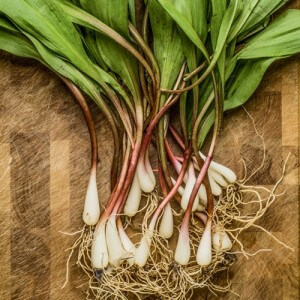A beginner’s guide to ramps
Ramps have without doubt caused a great buzz among the culinary academy as of late. The spring vegetable, which has some similarities to onions, leeks and garlic, is the latest produce to become the craze of foodies, following in the wake of kale and heirloom tomatoes. However, for the uninitiated, it’s probably hard to identify ramps from leeks based on appearance, especially since ramps are often referred to as spring onions or wild leeks, according to Eater. So what’s the big deal about ramps? And how can you use them when you cook at home?
What are ramps?
Ramps have a similar look to scallions, but are a bit smaller and have a garlic-leek hybrid flavor. Ramps are a harbinger of spring and can be used in their entirety (bulbs, stems and leaves) in cooking. These veggies were traditionally foraged around Appalachia, according to Grace Communication Foundation, but now ramps foraging is banned in some regions.
Ideas for cooking with ramps in your kitchen
One of the great things about ramps is their versatility. These spring veggies have a green, oniony flavor that can complement a wide range of dishes, including potatoes, omelets, stir-fries, grilled meats and soups. Bon Appetit suggests simply grilling ramps brushed in olive oil for a tasty seasonal side dish. When you purchase ramps at a grocery outlet or farmers market, make sure that the leaves are not wilted. You’ll be more likely to find ramps at the latter location. Ramps can be added to a salad, but note that raw ramps have a very powerful and pungent flavor and odor, which can lead to bad breath.
Why are ramps in high demand?
For East Coast foodies and farm-to-table chefs, ramps signify the beginning of fresh produce season. These greens are treasured because they arrive right as the winter comes to a close, long before many other vegetables have had time to grow and ripen. Ramps are pretty rare since they’re foraged and the season only lasts from about April to June, which explains why chefs scramble to purchase them whenever possible. However, the price of ramps reflects this craze, as Eater notes these greens can cost up to $20 per pound. Moreover, many chefs and ecological experts express concern that this demand may result in ramps becoming endangered.


